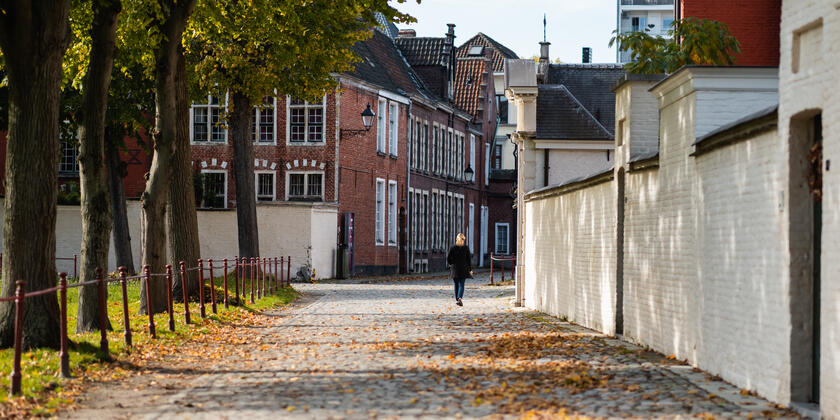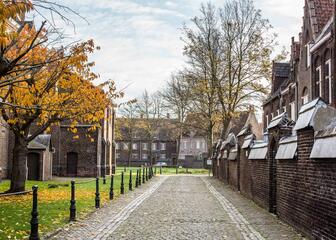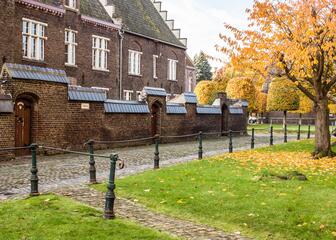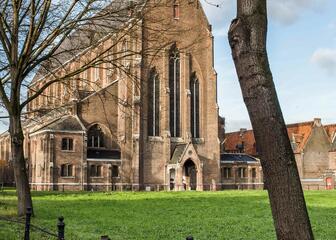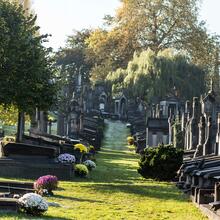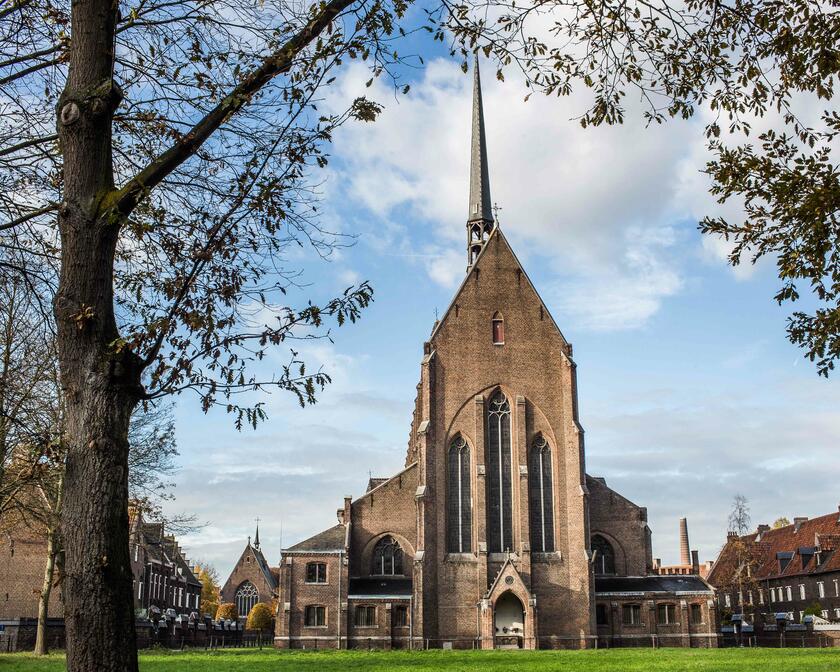
Beguines were single women who lived together as a Catholic community in a ‘beguinage’. The beguines took no religious vows but had to live by the rules of the beguinage for as long as they lived there. The three main rules were obedience to their superiors, chastity and austerity. In contrast to nuns, beguines had to earn their own living.
The Great St Elizabeth Beguinage was built between 1873 and 1874 in an astounding feat of construction: in less than two years, 18 contractors and 600 workers built a total of 80 houses, 14 convents, a meeting hall, an infirmary, a chapel and a church.
UNESCO site in Ghent
This is an ideal place to escape the bustling city of Ghent for a moment during your weekend break. It is an exceptionally large beguinage, just outside the city, in the Sint-Amandsberg district. Six hundred beguines once lived here, although they have been gone for many years now. Nonetheless, the calm and stillness is still unique. The Great Beguinage is one of two beguinages in Ghent that is included in the UNESCO World Heritage list.
The information continues beneath the illustrations.
Opening hours
The beguinage is accessible via two entrances:
- Entrance gate in Engelberg van Arenbergstraat - open from 6 am to 11 pm
- Entrance gate in Jan Roomsstraat (only accessible for pedestrians and cyclists) - open from 6 am to 9:30 pm
Entrance fee
Basic price
free
